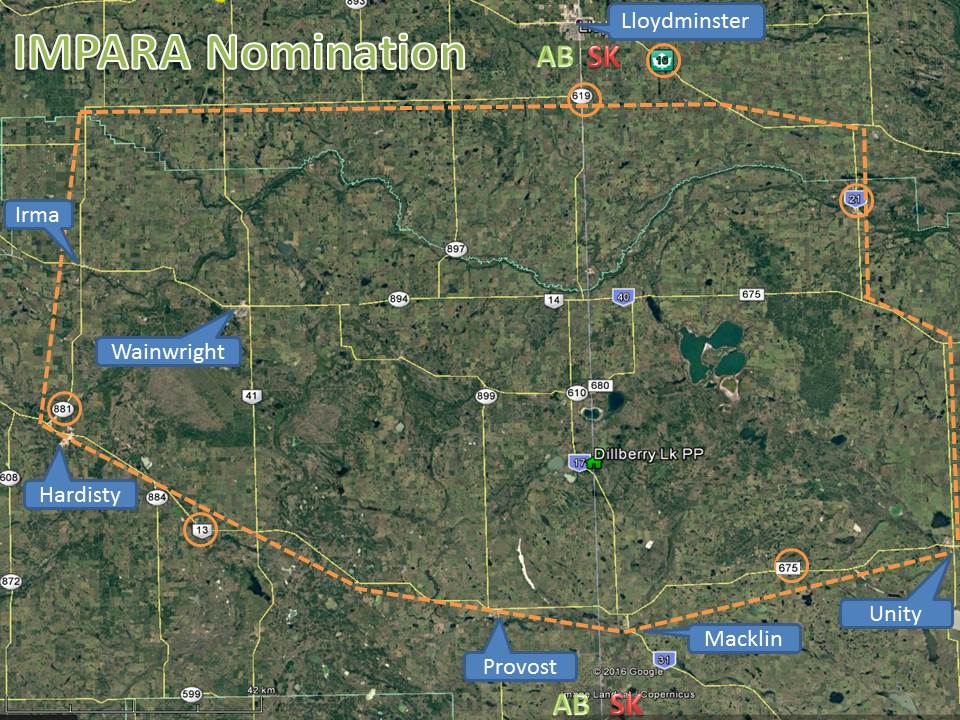Nominating Important Amphibian and Reptile Areas in Alberta
Guest Blog - Nominating Important Amphibian and Reptile Areas (IMPARA) in Alberta
Darcey Shyry P.Biol., Instructor of Energy and Environmental Sciences, Lakeland College
Can you ID frogs and toads by their calls?
I am preparing a nomination for an Important Amphibian and Reptile Area (IMPARA) in the Parkland region along the Battle River (see map below) between Hardisty (AB) and Manitou Lake (SK). The IMPARA program, managed by the Canadian Herpteological Society, is similar to the Important Bird Areas (IBA's) in that they identify important areas for herptile conservation (see  Canadian Herpetological Society).
Canadian Herpetological Society).
 Canadian Herpetological Society).
Canadian Herpetological Society). This proposed IMPARA site is important because it:
- has species of conservation concern including northern leopard frogs, plains spadefoot toads, Canadian toads and tiger salamanders
- has a high diversity of species (at least 7!)
- fulfills important life history functions of herptofauna
The herptile observation records are somewhat limited so I am requesting that herptophiles with the ability to identify amphibians by their calls conduct surveys in the nomination area this spring (from mid-April to early-June) and report their results to the Alberta Volunteer Amphibian Monitoring Program ( Alberta Conservation Association ) if in AB, and to the SK CDC if in SK. The survey protocols for amphibians are the same for AB and SK and can be found
Alberta Conservation Association ) if in AB, and to the SK CDC if in SK. The survey protocols for amphibians are the same for AB and SK and can be found  here. If it helps, please consider this an impromptu BioBlitz for Canada's 150th (
here. If it helps, please consider this an impromptu BioBlitz for Canada's 150th ( BioBlitz Canada).
BioBlitz Canada).
The areas that I believe survey efforts should focus include:
- the existing protected areas within the IMPARA nomination boundaries (e.g. Dilberry Lake Provincial Park, Wainwright Dunes Ecological Reserve, Ribstone Creek Heritage Rangeland, Kilarney-Reflex Lake Heritage Rangeland)
- anywhere along the Battle River and its tributaries (e.g. Ribstone Creek) between Hardisty and the confluence with the North Saskatchewan River (in SK)
- the IMPARA nomination area in SK as I could not find any herptile records
0

